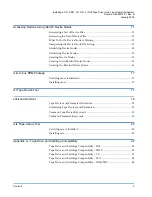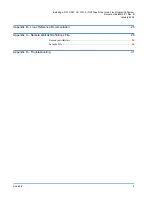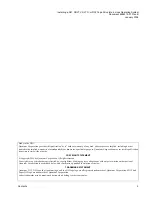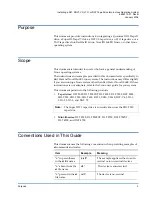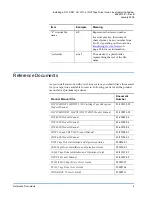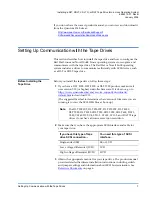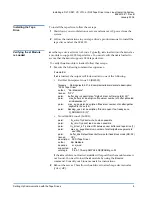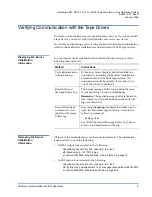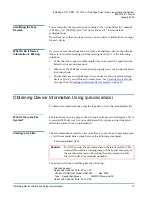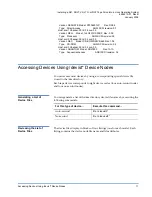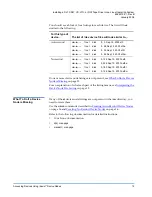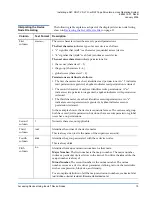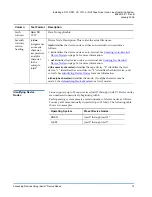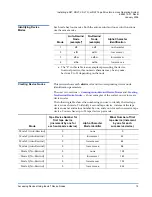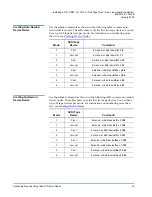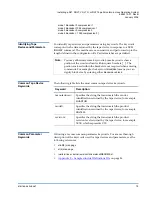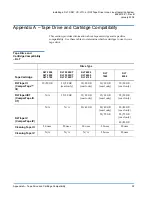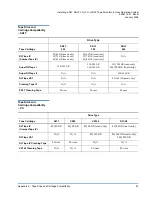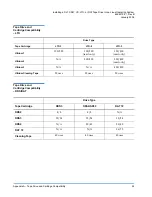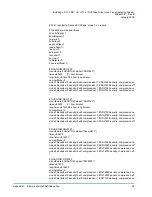
Installing a DLT, SDLT, VS, LTO, or DAT Tape Drive Into a Linux Operating System
6464215-01, Rev B
January 2006
Accessing Devices Using /dev/st* Device Nodes
14
Identifying Device
Nodes
0
Linux supports up to 32 tape devices [(n)st0* through (n)st31*). Device nodes
are numbered consecutively beginning with
0
.
Each operating system presets a certain number of device nodes as follows.
You may add more manually if needed (up to 32 total). The following table
shows two examples:
Sixth
column
Mmm DD
YYYY
Date. Not applicable.
Seventh
column,
section
heading
(n)st
na
n
represents
a numeric
character;
a
represents
an alpha
character.
In the
example:
(n)st0*
Device Node Description. This is also the actual file name.
(n)st
identifies the device node as either auto-rewind or no-rewind as
follows:
•
st
identifies the device node as auto-rewind. See
Creating Auto-Rewind
Device Nodes
on page 16 for more information.
•
nst
identifies the device node as no-rewind. See
Creating No-Rewind
Device Nodes
on page 16 for more information.
n (the numeric character)
identifies the tape device. “
0
” identifies the first
device; “
1
” identifies the second device; “
2
” identifies the third device, and
so forth. See
Identifying Device Nodes
for more information.
a (the alpha character)
identifies the mode. (No alpha character means
mode 1.) See
Identifying Device Modes
for a list of modes.
Operating System
Preset Device Nodes
RHEL3
(n)st0* through (n)st31*
SuSE9
(n)st0* through (n)st7*
Column Text
Format
Description


